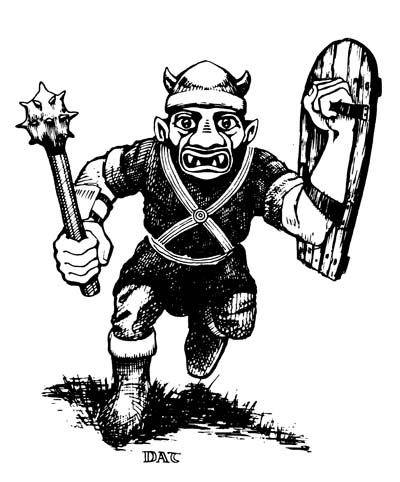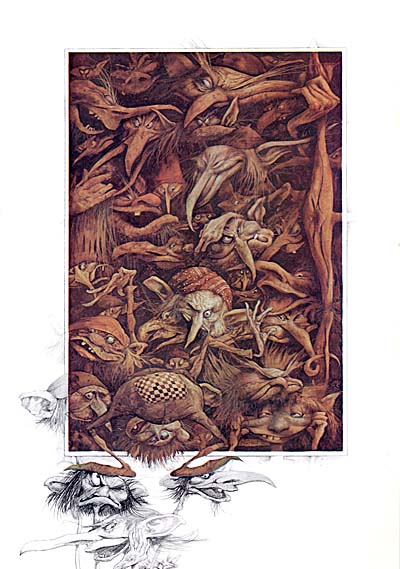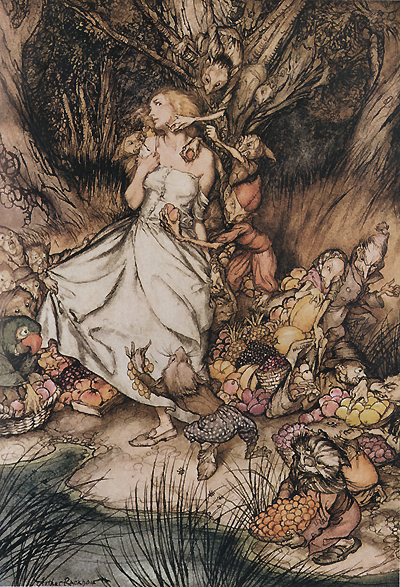Evolution of a GOBLIN (part 1)
August 5, 2007

It was the first image completed (and is one of the designs I am most proud of) in Arthur Spiderwick’s Field Guide – and it was brought to life by the magic team of movie FX wizards at Phil Tippett’s studio – the Spiderwick goblins. Or Diabolus vulgaris from the family Adentidae, as Arthur identified them in his Guide to the fantastical world.
But how did I arrive at a new design for a creature that has been rendered countless times in books, movies, games and toys?
I’d like to share some of the thinking that went into it as it exemplifies the philosophy I used when designing many of the creatures in the world of The Spiderwick Chronicles. My hope is only to inspire others to think out-of-the-box in keeping fantasy alive, fresh, and evolving through exciting design.
Part 1 – Goblins of my childhood
I know I was introduced to goblins and fairies at a very young age through fairy tales read to me by my mom, like those of the Brothers Grimm and Andrew Lang. But one of the first images of a goblin that stuck in my mind was David Trampier’s pen & ink illustration for 1980’s Dungeons & Dragons Monster Manual (something I’ve already reminisced about in previous posts). In fact, I still have a drawing I copied from that book when I was 12 years old.

The D&D goblins were impish and combat attired. My guess is that they, like many of the D&D humanoids, were inspired by J.R.R. Tolkien’s world of Middle Earth. Yet, C.S. Lewis also mentions goblin-like creatures of the night in his Narnia books…though they may be more demon-like when one looks deeper into Lewis’ thinking behind those stories.

Even movies of that time, like Legend and Labyrinth, have goblins that are similar in nature – the latter, of course, were designed by the faerie mastermind Brian Froud. Brian’s goblins are more silly and humorous grotesques, possibly inspired by gargoyles that adorn many of the churches and ancient buildings in England. Or, perhaps, the British grand master of fey illustration, Arthur Rackham, inspired him.

In most cases, even in images earlier than these examples, designs were built upon a small, ugly humanoid (usually green) creature whose motivations run from no-good mischief to malicious intent. Even the Green Goblin in the Spiderman comics pretty much falls into this category – and he was really just a maligned human.
Back to main news page

 Menu
Menu Connect
Connect









